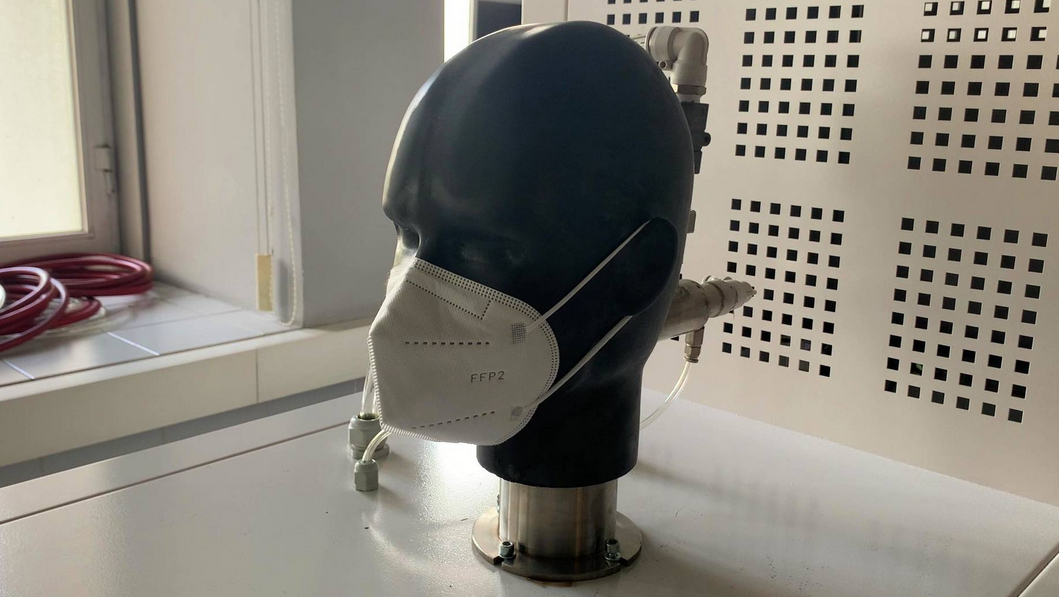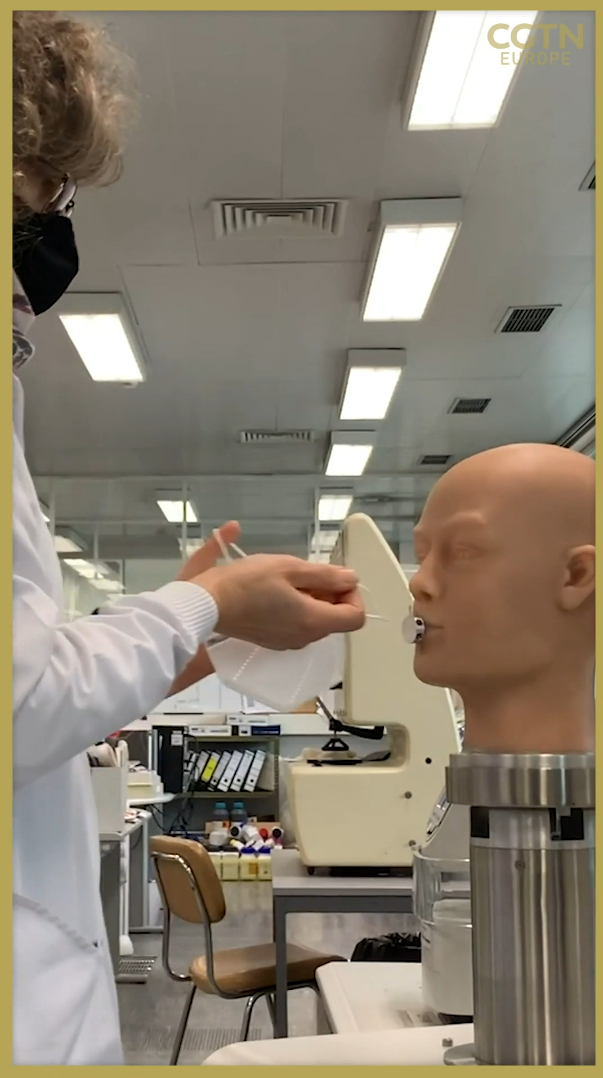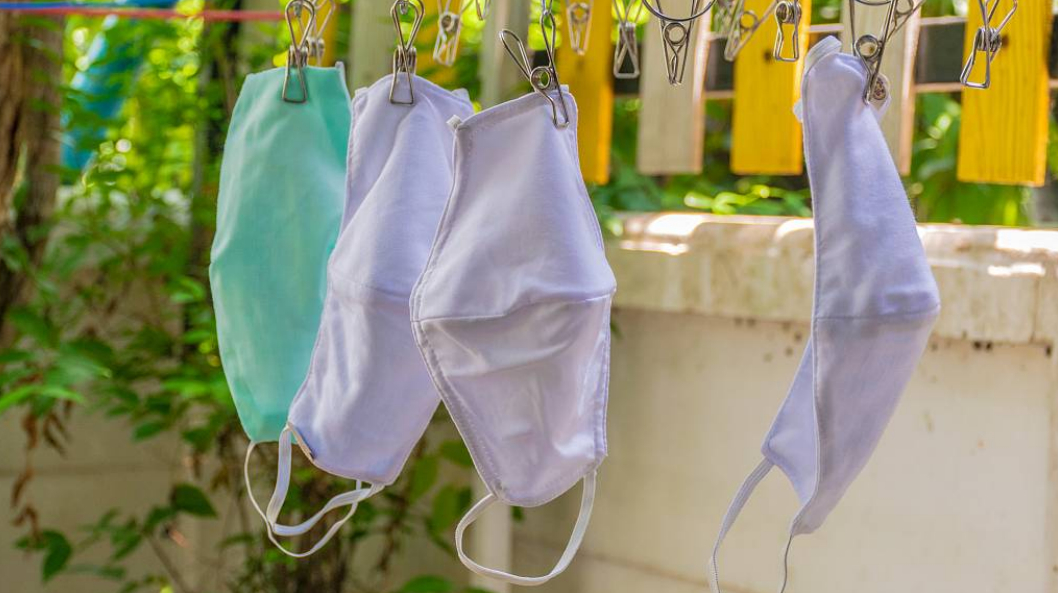
The researchers have used the mannequins to certify more than 3,500 textile masks. /Filipa Soares/CGTN Europe
Even before the pandemic hit Portugal, one company was busy testing textile masks to make sure they worked against COVID-19 – using “breathing” mannequins in their trials.
Researchers from the Textile and Clothing Research Center (CITEVE), just outside the northern city Porto, started working on their innovative system from scratch in 2020. So far, they have used the life-like dummies to test and certify more than 3,500 textile masks.
Despite several European countries recommending medical face coverings over the cloth alternatives, CITEVE’s experts say many textile masks are just as useful as the surgical ones – and for certain purposes, they can even be better.

The most important factors in certifying a mask for public use are filtration and breathability. /Filipa Soares/CGTN Europe
How are the masks tested?
 To be certified for public use amid the coronavirus, textile masks have to pass a series of tests, the most fundamental being filtration and breathability.
To be certified for public use amid the coronavirus, textile masks have to pass a series of tests, the most fundamental being filtration and breathability.
For the former, the scientists judge the masks according to two types of protection: Level 3, which guarantees the mask can filter 70 percent of particles; and level 2, which ensures a higher filtration of at least 90 percent.
The particles used are roughly the same size as those of COVID-19, with the scientists employing both inert particles and live bacteria during the tests.
Attaching the mask to the mannequin’s mouth, which is hooked up to a series of sensors, the team then passes a flow of air through the mask, measuring how many particles get through the textile.
“For breathability, we use the method employed for surgical masks,” says CITEVE’s general director Braz Costa, explaining how they measure the resistance – or the pressure difference – the material creates in the air’s passage.
The researchers also wash and dry the masks dozens of times to determine how many times they can be cleaned without losing their protective capacity.
According to the experts, some textile masks can be washed five times, while others can withstand up to 100 washes.
Surgical vs textile
When the pandemic first hit Europe, some countries such as Germany and Austria rejected the use of textile masks to fight the virus. Instead, they made it mandatory to use medical masks in public transport, shops and other public spaces.
However, Costa explains it was not necessarily a well-informed choice as certified textile masks can offer ordinary citizens very good protection against COVID-19.
“I think there the decision was badly thought out because textile masks and surgical masks are perfectly comparable as long as the filtration level of social masks is as close as possible to 95 percent, the minimum required for surgical masks,” he says.

Some masks can be washed up to 100 times and still retain their protective qualities. /CFP
This is mainly because surgical masks are designed to fight transmission when people are in close proximity to the virus, such as medical staff.
He says surgical masks often offer limited breathability, which is perfect for halting transmission in the medical setting, but less useful for socially distanced human interaction.
Costa also points out that if the masks are too good at their job, it can lead to a build-up of carbon dioxide between the mask and the mouth.
Although many textile masks work well, CITEVE is now working on reaching a higher level of filtration for cloth face coverings.
“We are developing new solutions that will make it easier to create social masks with a 95 percent filtration rate, because nothing prevents a textile mask from being certified as a surgical mask,” says Costa. “This is a common misconception.”
The researcher adds that if more emphasis is given to reusable textile masks, it could limit plastic pollution caused by the surgical alternatives: “The environmental impact of using disposable personal protective equipment is huge.”





